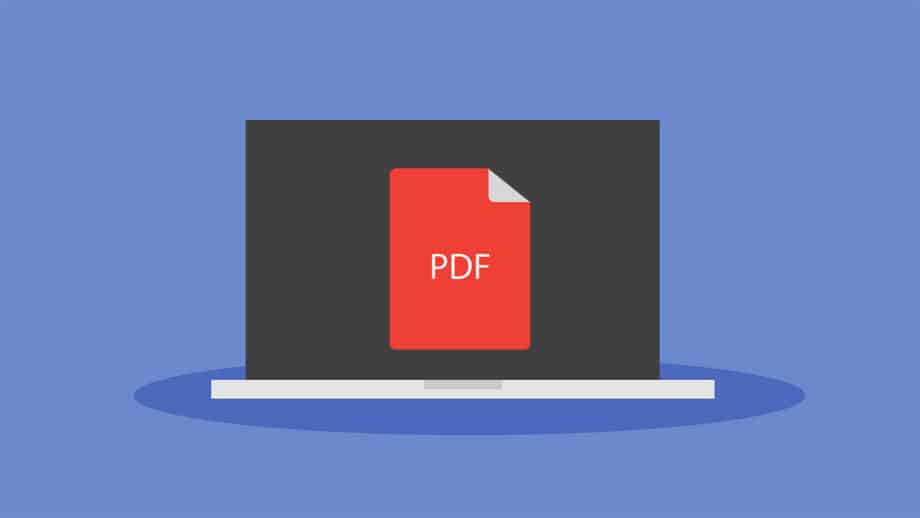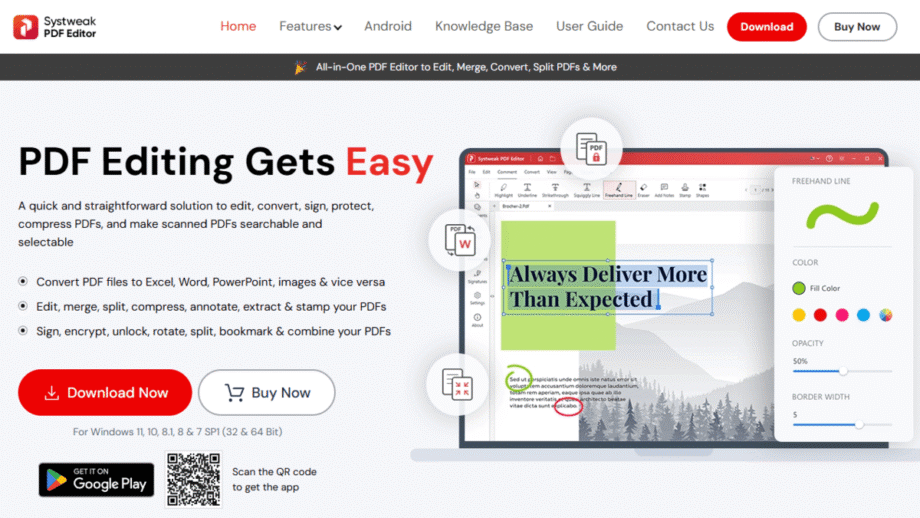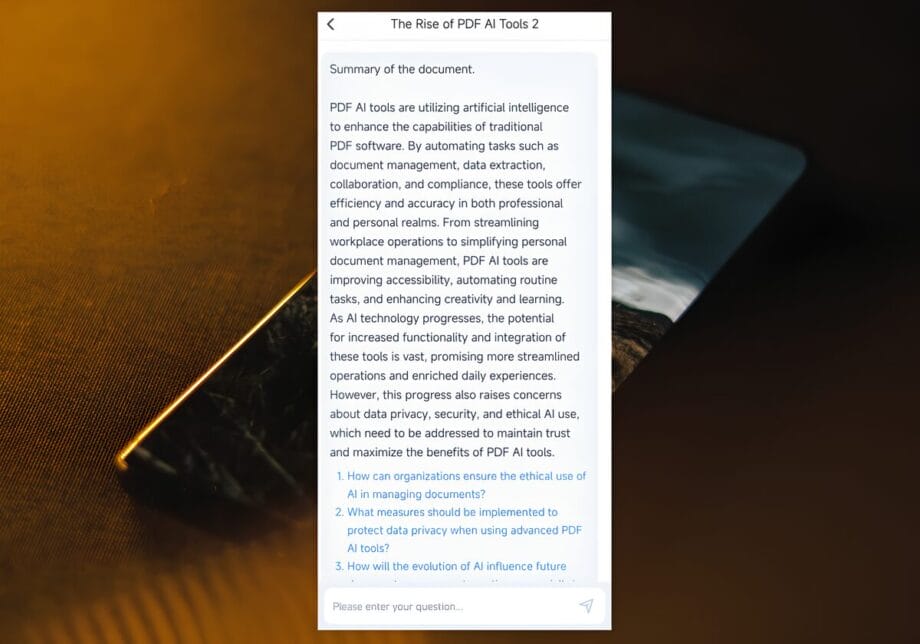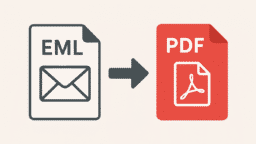Anyone who’s ever tried to edit a PDF knows the frustration. You’ve got this perfectly formatted document, but changing even a single word feels impossible. That’s where PDF conversion software enters the picture, though the reality of these tools is far more nuanced than most people realize.
Why PDF Conversion Became Essential

PDFs were never meant to be edited. Adobe designed them as digital paper – documents that would look identical whether viewed on a Windows PC in New York or a Mac in Tokyo. This consistency made PDFs the gold standard for official documents, contracts, and reports.
But then something interesting happened. As remote work exploded and collaboration became everything, people needed to actually work with PDF content. Marketing teams wanted to repurpose white paper content for blog posts. Legal departments needed to extract contract clauses for new agreements. Research analysts required data from PDF reports in spreadsheet format.
The conversion software industry emerged to bridge this gap, but it’s not as straightforward as you might expect.
The Technology Behind the Magic
Modern PDF conversion relies on several sophisticated technologies working together. For text-based PDFs (documents created digitally), the software can directly extract and reformat the underlying text data. This process typically yields excellent results because the text information is already there, waiting to be accessed.
Scanned PDFs present a completely different challenge. These are essentially images of documents, requiring Optical Character Recognition (OCR) technology to “read” the text. Think of OCR as software that tries to recognize letters and words the same way humans do when looking at a page.
The quality gap between these two scenarios is dramatic. A clean, text-based PDF might convert with 99% accuracy, while a scanned document could struggle to reach 85% accuracy depending on image quality, font type, and document condition.
Machine learning has revolutionized OCR accuracy over the past few years. Modern engines can now handle handwritten text, recognize tables and forms, and even maintain complex formatting structures that would have been impossible just five years ago.
What Actually Determines Conversion Quality
The biggest factor isn’t the software you choose – it’s the quality of your source document.
A crisp, well-formatted PDF created directly from Microsoft Word will convert beautifully with almost any decent software. But a fuzzy scan of a photocopied document from 1995? Even the most expensive enterprise software will struggle with that.
Text recognition accuracy varies wildly based on font type. Standard fonts like Times New Roman, Arial, and Calibri convert almost perfectly. Decorative fonts, stylized headers, or documents with unusual typography can cause problems across all platforms.
Document complexity matters too. A simple text document converts easily, but try converting a complex annual report with embedded charts, multi-column layouts, and mixed text sizes, and you’ll quickly discover the limitations of your chosen software.
Here’s what consistently produces the best conversion results:
- Source document resolution above 300 DPI – anything lower and you’re fighting an uphill battle
- Standard business fonts – avoid decorative typefaces if you plan to convert later
- Clean, high-contrast scans – invest the extra minute to get this right
- Properly oriented pages – straighten crooked scans before conversion
- Minimal background noise – remove coffee stains, wrinkles, and shadows when possible
Before starting any conversion project, it’s also worth checking if your PDF has any unwanted watermarks or annotations that might interfere with the process. Tools like Systweak PDF Editor offer specialized features for removing watermarks from PDFs, which can significantly improve your conversion results.

The Software Landscape: What’s Actually Worth Using
Adobe Acrobat Pro remains the industry standard, and for good reason. It handles complex documents better than most alternatives and integrates seamlessly with other Adobe products. However, the subscription cost can be prohibitive for casual users.
ABBYY FineReader has built a reputation as the OCR champion. If you’re primarily dealing with scanned documents, it often outperforms more expensive alternatives. The interface feels dated compared to newer competitors, but the core technology is solid.
For budget-conscious users, PDFelement offers surprisingly robust features at a fraction of Adobe’s cost. It won’t handle the most complex conversions as gracefully, but for standard business documents, it performs admirably.
Nitro Pro sits in an interesting middle ground, offering professional features with better pricing than Adobe but without quite matching the conversion quality for challenging documents.
The rise of online conversion tools has been remarkable, but they come with significant limitations. Most impose file size restrictions, raise privacy concerns by processing documents on remote servers, and offer limited customization options. For quick, straightforward conversions, online tools like InstantPDFKit can handle basic document processing needs without requiring software installation.
Where Things Go Wrong (And How to Avoid the Headaches)
The most common conversion failures aren’t software problems – they’re expectation problems.
Users often expect converted documents to look identical to the originals. This rarely happens, especially when converting from PDF to Word. The fundamental formatting models are different. PDFs use absolute positioning (like traditional typesetting), while Word uses relative formatting that flows and adjusts.
Tables cause particular headaches. A complex table that looks perfect in PDF might need significant adjustment after conversion to Word or Excel. The software can recognize that there’s a table and preserve the data, but the exact spacing and alignment often require manual cleanup.
Another frustration point involves fonts. If your PDF uses a proprietary or uncommon font that isn’t installed on your system, the conversion software has to substitute something similar. This can dramatically change the document’s appearance.
Security restrictions also trip up many users. Some PDFs include restrictions that prevent text extraction or editing. Legitimate conversion software respects these restrictions, though workarounds exist for documents you legally own.
Smart Conversion Strategies That Actually Work
Start by testing your PDF’s convertibility. Try selecting and copying text from the original document. If this works smoothly, you’re dealing with a text-based PDF that should convert well. If text selection is impossible or produces garbled results, you’re looking at a scan that will require OCR processing.
For scanned documents, invest time in image preparation. Straightening crooked scans, adjusting contrast, and removing background noise can dramatically improve conversion results. Many users skip this step and then blame the software for poor results.
Batch processing requires a different approach than single-document conversion. Establish consistent file naming conventions, organize documents logically, and monitor the process rather than starting a huge batch and walking away. Errors compound quickly in large batches.
Consider format-specific strategies. Converting to Word works best for text-heavy documents where editing is the primary goal. Excel conversion makes sense for data tables and financial reports. HTML conversion preserves complex layouts while maintaining some editability.
The Privacy and Security Reality
Free online converters are convenient but come with real privacy risks. Your documents get uploaded to servers owned by companies with varying privacy policies and security practices. For sensitive business documents, this trade-off often isn’t worth the convenience.
Enterprise organizations should prioritize software that processes documents locally or offers private cloud deployments. The cost difference is significant, but so is the risk reduction for confidential information.
Many conversion tools now offer automatic metadata removal, which prevents accidental sharing of hidden information like author names, edit histories, and internal comments that might be embedded in the original PDF.

Software Categories by Use Case
For Occasional Personal Use:
- PDFelement (good balance of features and price)
- Nitro PDF (solid performance for basic needs)
- Online tools for non-sensitive documents
For Small Business Operations:
- Adobe Acrobat Pro (if budget allows)
- ABBYY FineReader (excellent for scanned documents)
- Foxit PhantomPDF (reliable mid-tier option)
For Enterprise Environments:
- Adobe Document Services (API integration)
- ABBYY FlexiCapture (high-volume processing)
- Kofax Power PDF (advanced automation features)
Recent expert reviews from TechRadar’s comprehensive testing of PDF editors, PCWorld’s evaluation of the best PDF software options, and RSWEBSOL’s overview of best PDF editors from a business use case perspective consistently highlight the importance of matching software capabilities to actual usage patterns rather than simply choosing the most expensive option.
Looking Ahead: What’s Coming Next
Artificial intelligence is reshaping PDF conversion in fascinating ways. Modern tools can now understand document context, recognize form fields automatically, and even suggest optimal output formats based on content analysis.
Integration capabilities are expanding rapidly. Conversion software increasingly connects with document management systems, cloud storage platforms, and business applications to create seamless workflows that eliminate manual file handling.
Mobile conversion has improved dramatically. What once required desktop software can now be accomplished with smartphone apps, though complex documents still benefit from full-featured desktop solutions.
The market is also seeing specialization. Instead of one-size-fits-all solutions, we’re seeing software optimized for specific industries, document types, or use cases. Legal document conversion tools handle contracts differently than financial software processes annual reports.
Making the Right Choice for Your Needs
Small businesses handling occasional conversions can succeed with mid-tier solutions that balance features and cost. The key is realistic expectations about conversion quality and willingness to do minor cleanup work.
Large organizations processing significant document volumes should evaluate enterprise solutions that offer automation, integration capabilities, and dedicated support. The productivity gains typically justify higher software costs within months.
Individual users need to honestly assess their conversion frequency and complexity requirements. Paying for professional software to convert a few simple documents monthly doesn’t make financial sense.
The PDF conversion landscape continues evolving rapidly, but the fundamental principles remain constant: source quality determines output quality, software capabilities should match actual requirements, and no tool can overcome poor input documents.
Understanding these realities helps set appropriate expectations and leads to better conversion outcomes regardless of which software you ultimately choose.
Frequently Asked Questions

Why do some PDFs convert perfectly while others come out as gibberish?
It depends entirely on how the PDF was created. Documents made directly from Word or other programs contain actual text data that converts easily. Scanned PDFs are just pictures of text, requiring OCR software to “read” the letters. Old scans, poor image quality, or unusual fonts can confuse the OCR process.
Can I convert password-protected PDFs?
Only if you know the password and the document allows text extraction. Some PDFs have editing restrictions but still permit copying text – these usually convert fine. Documents with full encryption require the password first. Never try to crack passwords on documents you don’t legally own.
What’s the deal with online converters being free while desktop software costs hundreds?
Free online tools make money from advertising, data collection, or by limiting features to drive premium subscriptions. They’re fine for basic conversions of non-sensitive documents. Professional software offers better accuracy, privacy protection, batch processing, and customer support – features that justify the cost for business use.
How can I maintain table formatting when converting to Word?
Tables are tricky because PDF and Word handle them differently. Start with clean, well-structured tables in your original PDF. Consider converting to Excel first if the table contains mostly data, then copying to Word. Some manual cleanup is usually necessary regardless of software quality.
Is it legal to convert PDFs I didn’t create?
Generally, yes, if you legally obtained the document and aren’t violating copyright by redistributing the converted content. Converting a PDF for personal research or legitimate business use is typically fine. Publishing or selling converted content without permission could be problematic.
Why do converted documents look different even when the conversion “works”?
PDFs use absolute positioning (think of traditional printing), while Word and other formats use flexible layouts that adjust to screen size and settings. Fonts might be substituted if the original isn’t available. Some spacing and formatting differences are normal and expected.
Can AI-powered converters really understand document context?
Modern AI can recognize document types, identify form fields, and suggest optimal conversion settings. However, “understanding” is still limited. AI excels at pattern recognition but can’t truly comprehend content, meaning the way humans do. It’s getting better rapidly, though.
What should I do if batch conversion keeps failing on certain files?
Isolate the problem files and examine them individually. Common issues include corrupted PDFs, unusual formatting, or security restrictions. Process problem files separately or consider manual conversion for difficult documents rather than letting them derail entire batches.
Are mobile PDF conversion apps worth using?
For simple documents and quick jobs, absolutely. Modern mobile apps can handle basic conversions surprisingly well. However, complex layouts, large files, or documents requiring precision are still better handled on desktop software with more processing power and advanced features.






